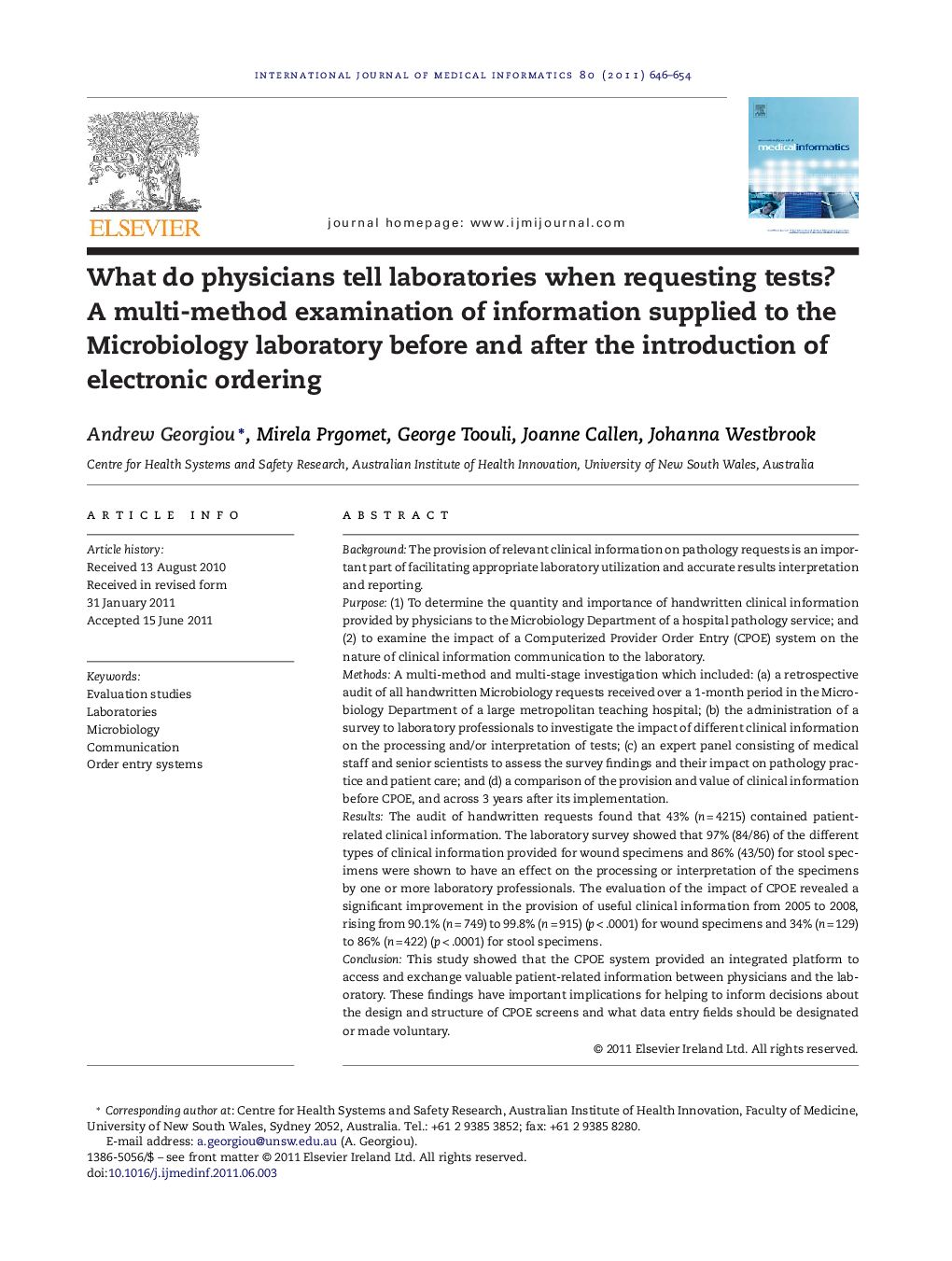| Article ID | Journal | Published Year | Pages | File Type |
|---|---|---|---|---|
| 516394 | International Journal of Medical Informatics | 2011 | 9 Pages |
BackgroundThe provision of relevant clinical information on pathology requests is an important part of facilitating appropriate laboratory utilization and accurate results interpretation and reporting.Purpose(1) To determine the quantity and importance of handwritten clinical information provided by physicians to the Microbiology Department of a hospital pathology service; and (2) to examine the impact of a Computerized Provider Order Entry (CPOE) system on the nature of clinical information communication to the laboratory.MethodsA multi-method and multi-stage investigation which included: (a) a retrospective audit of all handwritten Microbiology requests received over a 1-month period in the Microbiology Department of a large metropolitan teaching hospital; (b) the administration of a survey to laboratory professionals to investigate the impact of different clinical information on the processing and/or interpretation of tests; (c) an expert panel consisting of medical staff and senior scientists to assess the survey findings and their impact on pathology practice and patient care; and (d) a comparison of the provision and value of clinical information before CPOE, and across 3 years after its implementation.ResultsThe audit of handwritten requests found that 43% (n = 4215) contained patient-related clinical information. The laboratory survey showed that 97% (84/86) of the different types of clinical information provided for wound specimens and 86% (43/50) for stool specimens were shown to have an effect on the processing or interpretation of the specimens by one or more laboratory professionals. The evaluation of the impact of CPOE revealed a significant improvement in the provision of useful clinical information from 2005 to 2008, rising from 90.1% (n = 749) to 99.8% (n = 915) (p < .0001) for wound specimens and 34% (n = 129) to 86% (n = 422) (p < .0001) for stool specimens.ConclusionThis study showed that the CPOE system provided an integrated platform to access and exchange valuable patient-related information between physicians and the laboratory. These findings have important implications for helping to inform decisions about the design and structure of CPOE screens and what data entry fields should be designated or made voluntary.
► The provision of relevant clinical information is important in facilitating appropriate laboratory test utilization and accurate results interpretation and reporting. ► CPOE was associated with an increase in the quantity and usefulness of clinical information provided to the Microbiology Department of the pathology service. This positive finding is related to the capacity of CPOE systems to provide an integrated platform to access and exchange patient-related information, and prompt physicians to supply valuable information to the laboratories. ► These results have implications for the efficiency and effectiveness of the pathology laboratory contribution to the quality and safety of patient care.
